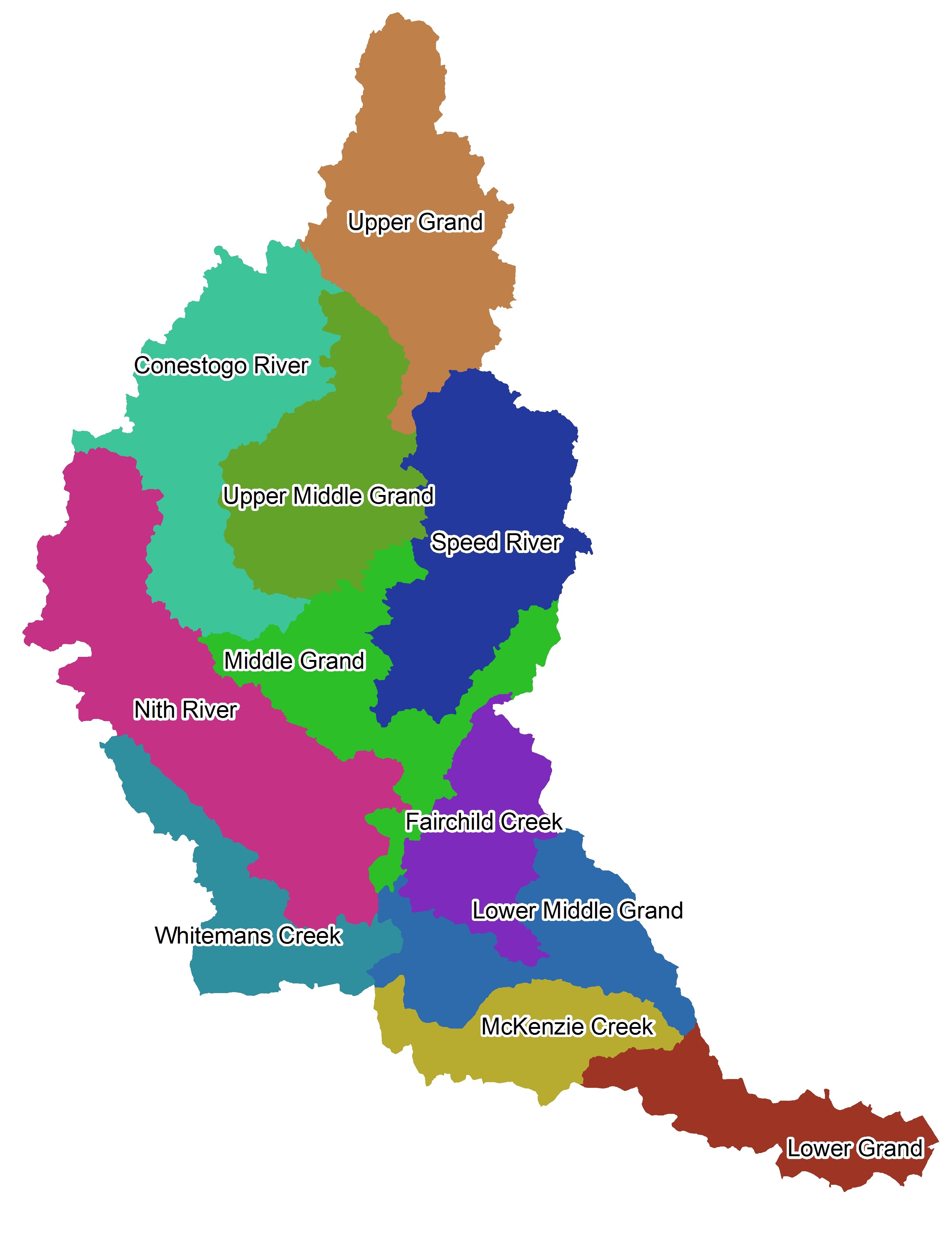Overview
The Upper Grand River subwatershed is located in the most northern portion of the Grand River watershed. It is where the Grand river starts. The subwatershed comprises portions of the Townships of Amaranth, East Garafraxa, Grand Valley, Melancthon, Southgate, and Wellington North. The Grand River starts northeast of Dundalk. The southern most portion of the watershed is at the Shand Dam, at Belwood Lake. The subwatershed total area is 79,100 hectares or 12% of the Grand River watershed.
Land
- Wetland area is 14,568 hectares or 18% of the subwatershed.
- Woodland area is 12,158 hectares or 15% of the subwatershed.
- There are four distinct physiographic regions: the Dundalk Till Plain, Stratford Till Plain, Hillsburgh Sandhills, and the Guelph Drumlin Field.
- There are 7 areas of natural scientific interest.
Water
- Total watercourse length is 1,128 kilometres.
- Total cold water stream length is 50 kilometres.
- Luther Lake and Belwood Lake are the largest lakes in the subwatershed. They are both reservoirs used by the GRCA for flood management.
Plants and Animals
- 34 fish species have been recorded in the subwatershed.
- 6 mussel species have been recorded in the subwatershed.
- Two invasive aquatic species, the rusty crayfish and the round goby, have been detected at Belwood Lake.
- 38 provincially significant species have been recorded in the subwatershed.
- Some examples of species at risk that have been recorded in the subwatershed include Henslow's sparrow, loggerhead shrike, Butler's gartersnake, and spotted turtle.


